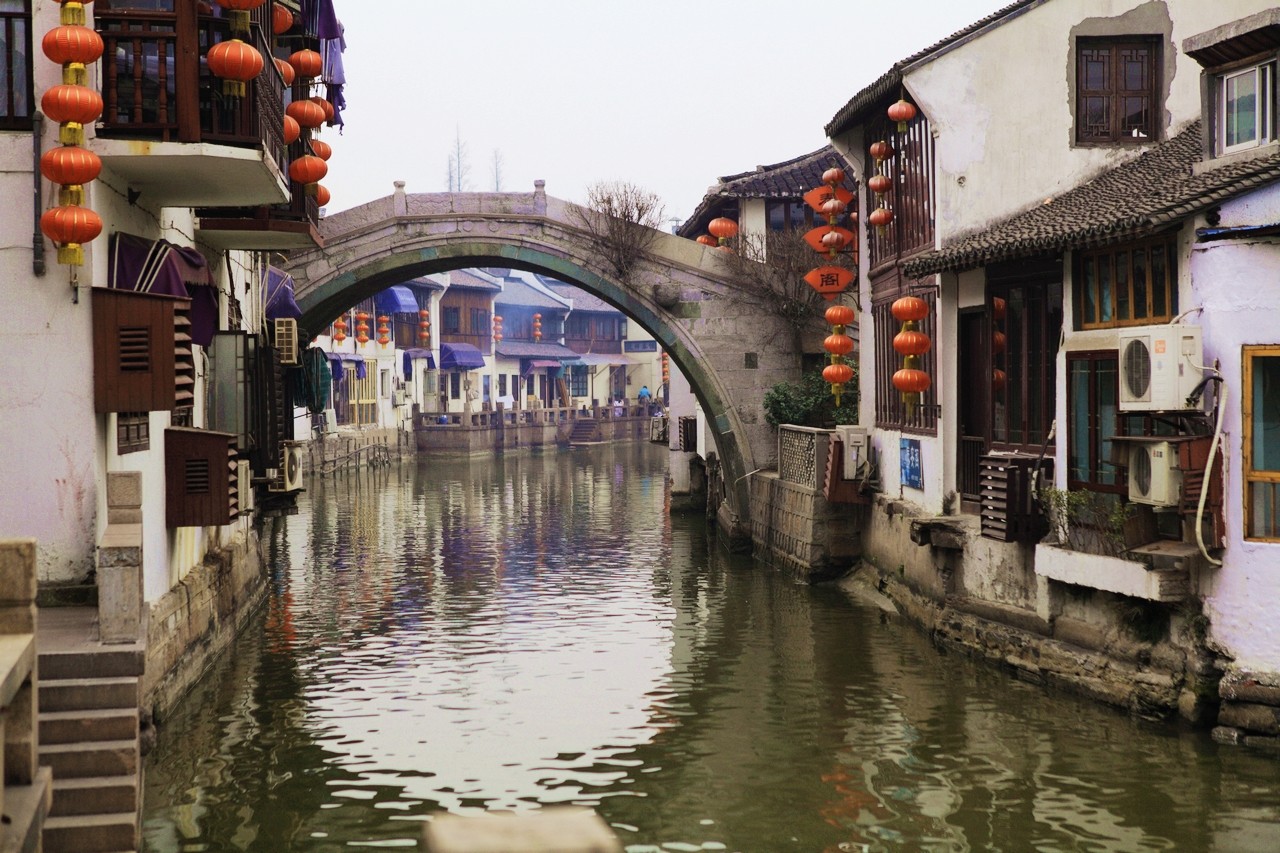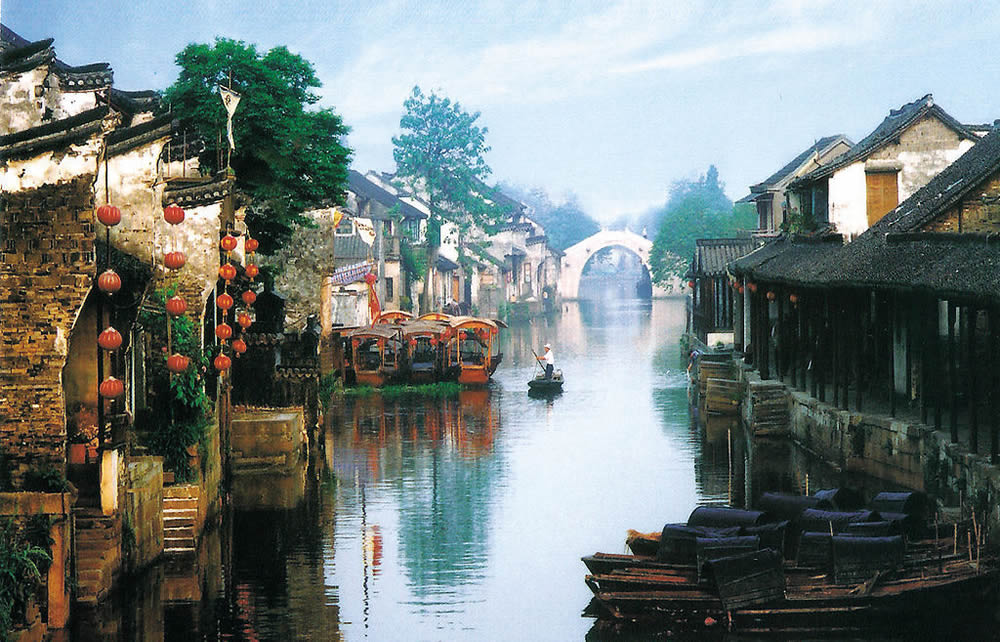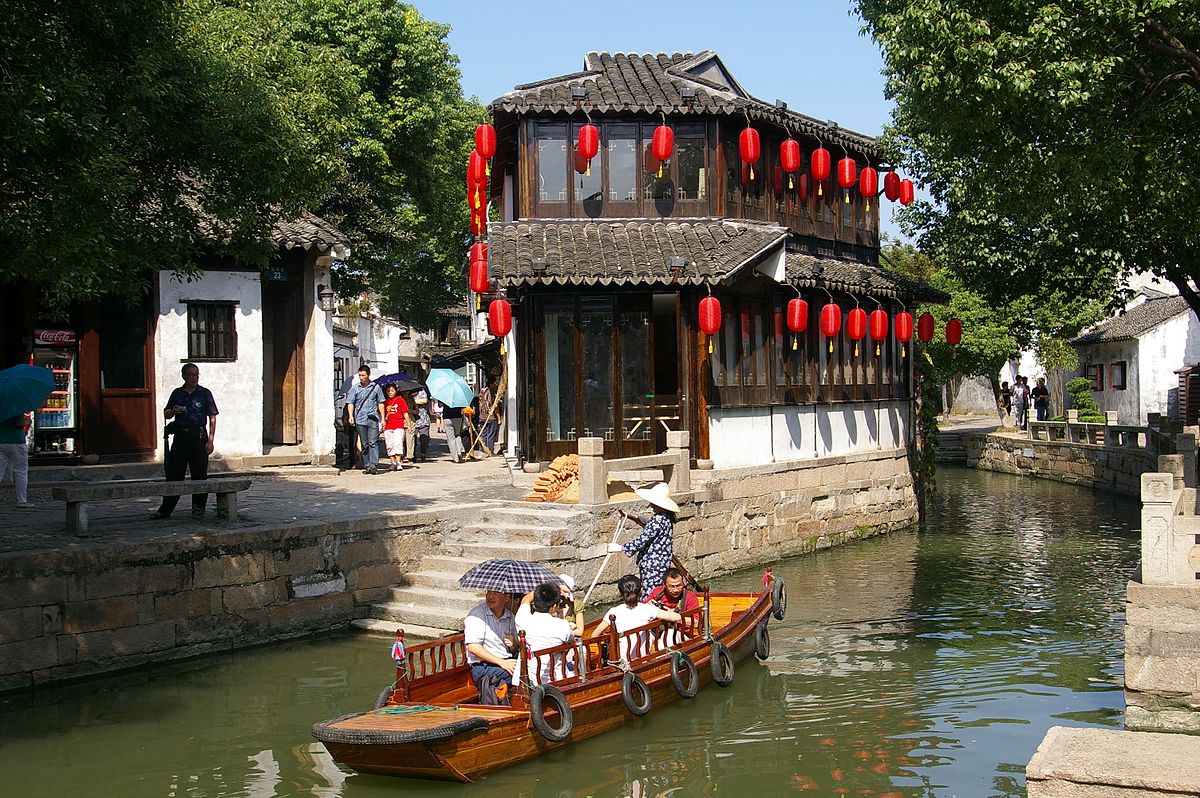Whether you're a shutterbug or simply have a day or two to spare and want to soak in some culture, you can't go wrong with visiting one of these water towns. They're all located within a day's drive from Shanghai and won't take you more than a day or two to explore.
Qibao
Qibao Old Town is the closest water town to downtown Shanghai, located in Minhang District, and also one of the smallest. It was built during the Five Dynasties Period and played witness to the Song, Ming and Qing Dynasties. It’s not very large, about two square kilometers, with only two canals. It’s still a good option though, if you’re short of time and don’t want to travel too far from the the city centre, accessible via metro line 9 Qibao Station.
.jpg)
How to get there: Take metro line 9 and get off at Qibao Station. From there, it's a short walk to Qibao Old Town.
Zhujiajiao
Zhujiajiao is the water town that most tourists visiting Shanghai go to. It’s located in Qingpu District, about an hour away from downtown Shanghai. It’s a lot larger than Qibao, filled with traditional Chinese-style residences, winding alleyways and 36 ancient bridges crisscrossing across waterways. It’s fairly commercial and crowded during the weekends, but it's still picturesque and worth a visit.

How to get there: Buses leave from the Shanghai Stadium (Gate 5) in the mornings, as well as from the Pu'an Lu Bus Station or the Shanghai Sports Stadium Station.
Zhouzhuang
Moving away from Shanghai proper is Zhouzhuang, which is nearer to Suzhou. It's one of the more well-known water towns in the area, and, as a result, feels a bit more commercialized. It's filled with street sellers hawking their wares any chance they get. It's very pretty, though—Ming and Qing Dynasty dwellings line the canals, and when dusk sets in, they glow bright red from the lanterns. The town gets quiet in the evenings, so if you have time to spare and want to experience the town away from the hustle and bustle of obnoxious tourists, definitely spend a night here.

How to get there: Buses leave from Shanghai South Long-Distance Bus Station, Shanghai Long-Distance Bus Station and the Shanghai Hongqiao Long-Distance Bus Station daily. Alternatively you can take metro line 11 to Huaqiao Station and change to Kunshan Tourism Bus No. 7 from Zhouzhuang Bus Station.
Xitang
Xitang is located smack between Shanghai, Suzhou and Hangzhou. It's popular for being the only water town with the unique langpeng 廊棚—sheltered streets hugging the waterside. Xitang is also known for its maze of ancient lanes; there are 122 in total, the most famous being the Shipi Lane, with a width of only 80cm at its narrowest section.

How to get there: Take a direct bus from Shanghai South Bus Terminal or the Shanghai Bus Terminal.
Tongli
Located on the southern outskirts of Suzhou, about 80km away from Shanghai, Tongli water town's system of canals mirrors those of Venice's, earning it the nickname "The Venice of the East." There are 49 stone bridges of various styles, of which the three most famous are the Taiping (peace), Jili (luck) and Changqing (celebration) bridges. During special occasions like weddings, it's tradition for locals to walk across these bridges in hopes of happiness, peace and fortune.

How to get there: Take a bullet train to Suzhou. Then either hop on a taxi or take one of the local bus routes to Tongli. There are also direct buses from the Shanghai Bus Station.
Nanxun
The least known, and possibly the quietest—by China's standards at least—on this list of water towns is Nanxun. It's one of our favorites. Located about two hours away from Shanghai, it was one of the wealthiest towns in China during the Ming Dynasty due to silk production. The trade brought them into frequent contact with overseas merchants. As a result the town's architecture features an interesting blend of Eastern and Western styles.

How to get there: Long distance buses leave from Shanghai Long-Distance Bus Staion, Hutai Road Bus Station, Hongqiao West Bus Station, Pudong East Bus Station and Shanghai South Long-Distance Bus Station daily.
Wuzhen
Wuzhen boasts a history of over 1,000 years, established back in 872 A.D. This water town is loosely divided into two areas—East and West. The East Area comprises restaurants, shops and museums, while the West Area is lined with guest houses, restaurants and bars, and arts and crafts shops and is a little less crowded during the day. While you're there, catch a bamboo pole climbing performance or a Huagu Opera, both unique to the area.
How to get there: Long-distance bus from Shanghai South Bus Station to Wuzhen will take you two hours.
Luzhi
Luzhi is located in the Taihu Lake Basin and is also close to Suzhou. It sees far fewer tourists so it's much quieter and feels more authentic. Many of the local dwellings were built during the Ming and Qing dynasties, and unlike many other water towns, are untouched by reconstruction. It also houses a whopping 41 ancient bridges, earning it the nickname "The Museum of Chinese Bridges." This water town is also known for its ginkgo trees, the oldest of which is over 1,300 years old and still stands today, at a height of 164ft. Come autumn, the foliage turns a beautiful yellow hue.
How to get there: Buses leave from Shanghai Zhongshan Bus Station, Shanghai Hongkou Gymnasium Station, Shanghai Stadium Station and Shanghai Yangpu Sports Center Station daily.